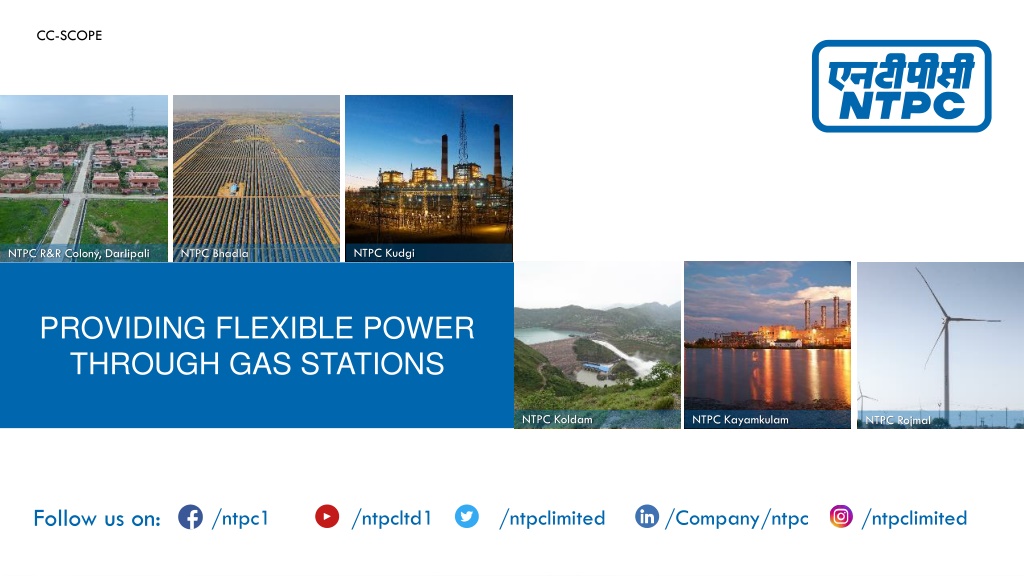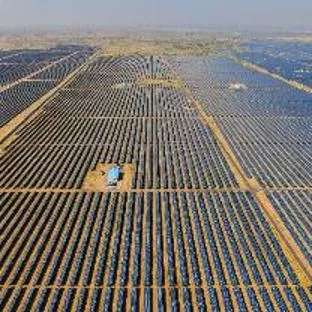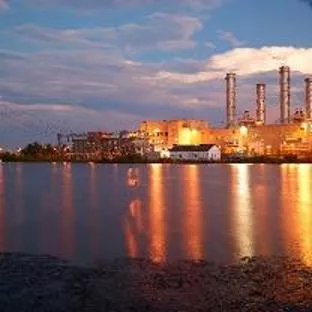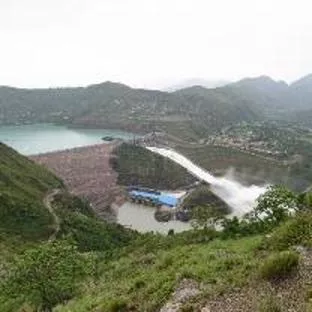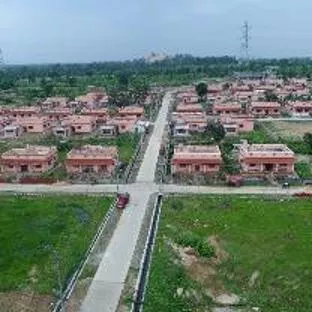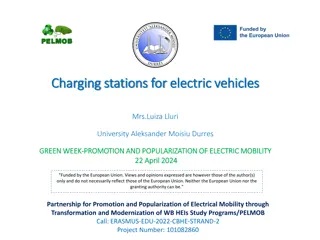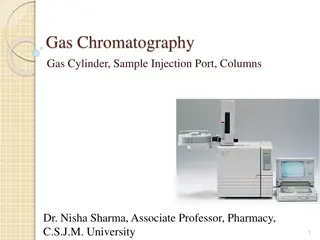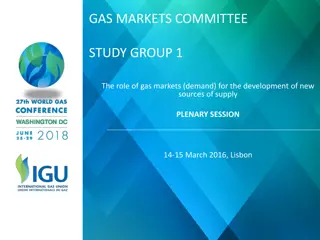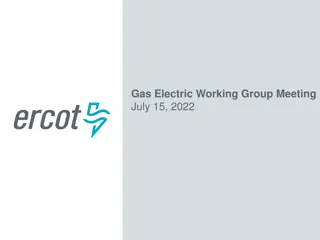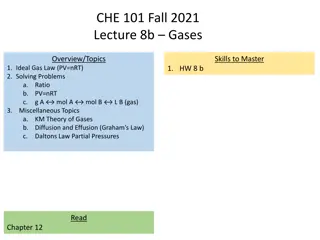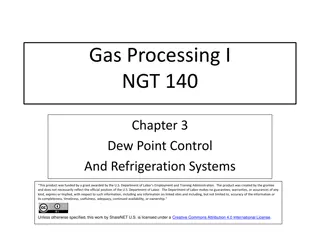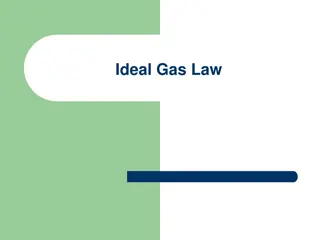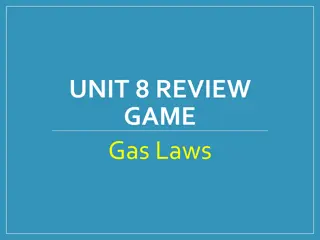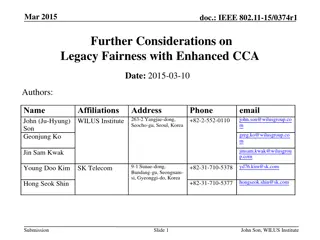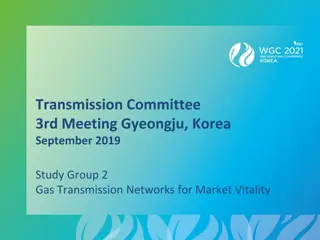Enhancing Flexibility and Efficiency of NTPC Gas Stations
Gas stations operated by NTPC have faced challenges due to changes in gas availability and pricing, impacting their operational efficiency. Efforts are being made to revamp these stations and explore options for sustainable operation. Financial support from PSDF has helped NTPC manage costs during crunch periods, demonstrating the potential for improvement and innovation in the gas station sector.
Download Presentation

Please find below an Image/Link to download the presentation.
The content on the website is provided AS IS for your information and personal use only. It may not be sold, licensed, or shared on other websites without obtaining consent from the author.If you encounter any issues during the download, it is possible that the publisher has removed the file from their server.
You are allowed to download the files provided on this website for personal or commercial use, subject to the condition that they are used lawfully. All files are the property of their respective owners.
The content on the website is provided AS IS for your information and personal use only. It may not be sold, licensed, or shared on other websites without obtaining consent from the author.
E N D
Presentation Transcript
CC-SCOPE NTPC Kudgi NTPC R&R Colony, Darlipali NTPC Bhadla PROVIDING FLEXIBLE POWER THROUGH GAS STATIONS NTPC Koldam NTPC Kayamkulam NTPC Rojmal Follow us on: /ntpc1 /ntpcltd1 /ntpclimited /Company/ntpc /ntpclimited
Presentation Outline Background Rising importance of gas stations Exploring various options for revamping of NTPC gas stations Commercial issues in operation of NTPC gas stations Efforts for Gas arrangements by NTPC Proposals to recover high operating costs Conclusion
Background Prior to 2011-12, abundant cheap domestic gas was available from KG-D6 basin. Gas production from the basin dipped from highest of 69.44 MMSCMD in March 2010 to 5.5 MMSCMD in FY 2017-18 Gas plants forced to import costly RLNG to meet fuel needs. By 2013, GoI also switched priority allocation of domestic gas from power sector to CGD sector. ECR increased sharply from Rs 2-3/unit to Rs 12-20/unit PLF of gas plants dipped sharply from 60% in 2011-12 to 10% in 2022-23. Beneficiaries of NTPC gas stations also relinquished about 25% of total capacity (900 MW out of 3658 MW) resulting in under recovery of AFC *up to Oct 2023 Source: CEA monthly data from NPP
Rising importance of gas stations India s peak demand reached all time high of 239.98 GW on 1st Sep 2023. Expected to increase further in the future due to increased economic activity and extended summers due to global warming. The proposed increase in RE integration to 500 GW by 2032 in the grid Higher injection of flexible generation sources required till energy storage options are feasible & affordable on large scale. Higher ramp-up rate and quick start-up time - USP of gas stations NTPC gas stations PLF dropped to just 4% in FY 2022- 23 but has again revived to 13% in FY 23-24 *up to Nov 2023 Source: NTPC SAP Data
REVAMPING OF NTPC GAS STATIONS
Financial Support from PSDF April-June 2023 anticipated to be crunch period by MOP Gas stations instructed to sell power in market during crunch period Cost of Gen in range of Rs 12-20 per unit but capping of Rs 10 per unit in Power Exchange PSDF Average MCP for day is Rs 5-7 per unit Cost of generation Sanction of grant by MOP from PSDF to recover shortfall b/w Gen cost & Revenue from market sale Revenue from market sale Successfully operated in crunch period from Apr-June 2023 NTPC Limited Received recommendation of Rs 76 cr reimbursement from PSDF
Selling Gas based Power in HP-DAM High price- Day Ahead Market (HP-DAM) launched in March 2023 To facilitate sale of power from costly gas stations 2 HP-DAM 17 MU power sold in HP-DAM by NTPC in Sep & Oct 2023 Capping of Rs 20/unit in HP-DAM NTPC Limited No provision of profile bidding
Operation under TRAS-Shortfall SRAS Regular operation under Ancillary services via TRAS-Shortfall 2 For grid support during peak hours PRAS TRAS Earlier declaration of ECR on monthly basis for TRAS Ancillary Services But High volatility in gas prices NTPC advocated for weekly ECR declaration for gas stations Weekly ECR declaration allowed by NLDC Voltage Control Black Start
Sale of power through bilateral contracts Sale of power from relinquished capacity through bilateral contracts from Aug-Oct 2023 Power sold to states like Tamil Nadu, AP & West Bengal (not original beneficiaries) 2 Also obtained consent from original beneficiaries like U.P and J&K to sell power to needy states from their share The gain realized from the sale of tied up capacity shared with them Approx. 122 MU sold Win-Win situation for all NTPC, Original beneficiaries & States to whom power sold
COMMERCIAL ISSUES IN OPERATION OF GAS STATIONS
Financial impact due to increase in start-ups Additional fuel cost incurred for start-up to the tune of 2.5 lakhs per GT & 35 Lakhs per module No regulatory provision for compensation of start-up cost 2 Overhaul frequency of gas turbines based on the concept of EOH EOH of GT increases by an average of 20 hours during each start-up Earlier completion of allotted EOH, thus shorter overhaul intervals, thereby increasing maintenance costs. Source: NTPC SAP Data
No part-load compensation in Open Cycle & Half module operation Part-load compensation provided as per degradation curve provided by OEM as per IEGC-2010 (4th amendment) No degradation curve provided by OEM for Open cycle & Half module operation In present scenario, Gas stations operate in open cycle for peak hours(4-6 hrs in a day) and remain under shutdown during off-peak hours If gas stations operate in combined cycle mode, they remain at technical min load in half module combination during off peak hours In half module operation, one GT is under shut down condition and not contributing to producing steam for steam turbine. The pressure & flow of steam entering the steam turbine is less resulting in lower steam turbine efficiency. So, Heat Rate in half module operation is slightly higher than in full module operation. Also, since same ST auxiliaries are in service but power output from steam turbine is less, APC is also higher. In case of Open Cycle Operation, flue gas from GTs exhaust is left out in the atmosphere instead of passing it through WHRBs and generate steam. So, for same amount of gas consumption, power output equivalent only to GTs capacity is achieved instead of complete station capacity
GAS PROCUREMENT EFFORTS BY NTPC
Procurement of gas via Monthly Spot Contracts and IGX Monthly spot contracts with GAIL, GSPCL, Shell, BPCL, IOCL on Reasonable Endeavour (RE) basis Gas procurement from IGX at cheaper rates starting from 03.11.2023 on Take or Pay (TOP) liability basis 2 At present, no flexibility regarding consumption of traded gas quantity in any station and no provision of carrying over of unused gas Actual gas requirement depends on real-time grid condition NTPC advocating to provide flexibility in consumption in any station and having provision of carrying over of unused gas quantity
Procurement of gas via Cargo in future Annual gas requirement of over 1200 MMSCM expected in coming years For 2024, Annual contract of 500 MMSCM with GAIL & about 300 MMSCM through spot RE contracts 2 Gas may also be sourced from IGX but very less volume in exchange Need to secure additional arrangements for at least 400 MMSCM through modes offering both higher certainty and flexibility Discussion held with GAIL, GSPCL and PLL to provide gas on firm commitment basis by sourcing cargo as per specific needs of NTPC The cargo (approx. 80 MMSCM) will be procured strategically from time to time to fulfill shortfall
PROPOSALS TO RECOVER HIGH OPERATING COSTS
CERC Staff paper on Grid Security Charge Cost of deploying AS being met through DSM pool account Costly gen from gas stations under AS depleting the DSM pool account at faster rate As per Staff paper issued by CERC on 25.09.2023, amount in DSM pool account may not be sufficient to recover these costs 2 Combined annual expenses for deploying AS estimated to be around 9,000 crores During FY 2022-23, total surplus in the DSM Pool Account was approx. 5,000 Crore May recover the deficit amount as Grid Security Charge options from states in proportion to the shortfall against their allocated share of reserves by NLDC or GNA quantum or both in 1:1 ratio
MOP scheme for gas-based power utilization for 2024 No planned maintenance during agreement period & no PSDF support Two-part tariff: Variable charges linked to gas price (VCGA) & Variable charges not linked to gas price (VCNG) VCNG = Fixed cost + Transmission charges + NVVN & Power Exchange charges + Gas transportation cost + Taxes + Marketing Margin etc. VCGA = Delivered Ex-ship (DES) gas price of Gail delivered LNG Start-up cost (SC) paid separately per MW = 0.5x1.356x103xVCGA Bidders selected based on VCNG up to 125% of lowest discovered VCNG Declared TRAS-Shortfall rates = [(VCNG + VCGA + SC+ Exchange charges)/1.10] Payment to gas stations based on AG or SG, whichever is lower No fixed cost from beneficiaries for operation period of scheme Declaration by generator for supplying untied capacity 2 Expected upcoming crunch period from March Oct 2024 Competitive bidding by NVVN for market-based sale & TRAS during this period from non-NTPC gas stations (approx. 4000 MW)
Conclusion & Way Forward Huge variable RE penetration in the grid would require higher injection from flexible power sources Gas stations with their quick start-up time and higher ramp rate capability can provide the required flexible power until battery storage systems become cost-competitive But cost of power generation high (Rs 12-20 per unit) due to use of costly imported gas 2 India should focus on ramping up the domestic gas production from existing reserves and discovering new gas reserves. All time high peak demand reached 239 GW on 1st Sep 2023 & expected to rise to 258 GW in FY 25 & further up to 277 GW in FY 27 If continues to import costly RLNG, states may have to pay extra Grid Security Charge Share of Solar & Wind power in total installed capacity is projected to rise to 54% in FY 32 from 27% at present. MOP may need to bring various schemes from time to time for recovering high operational costs
Thank You Presented by: Nishant Bansal, DM (OS-SIIS)
